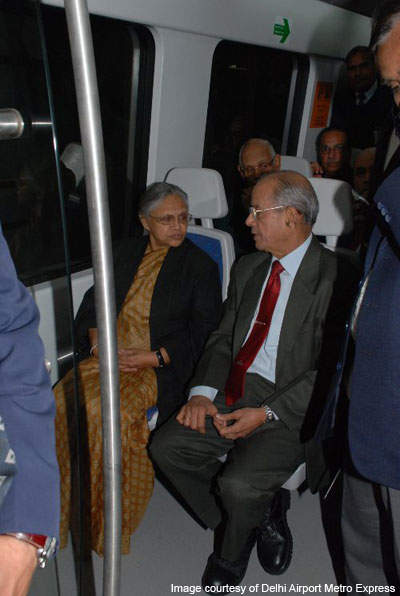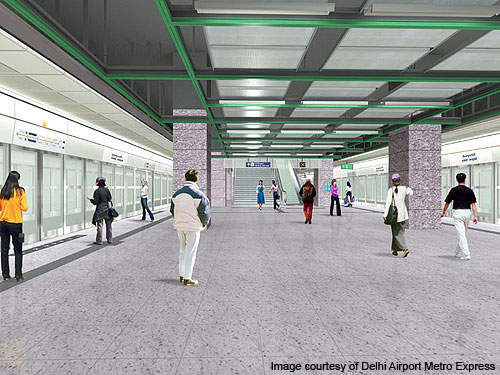The Delhi airport express rail link is a 22.7km long high speed metro rail operating between the New Delhi Railway Station and Dwarka Sector 21 in the suburbs of India’s capital city New Delhi. It passes through the Indira Gandhi International (IGI) Airport before terminating at Dwarka Sector 21. It was opened to the public in February 2011 after 27 months of construction.
The rail link has reduced the travel time between New Delhi Railway Station and IGI Airport to 18 minutes, which would otherwise take about two hours by road due to traffic congestions.
The line has cost approximately $1.26bn. The operatorship has been awarded to Delhi Airport Metro Express Private Limited (DAMEPL) for 30 years under a revenue sharing scheme.
Trains are currently operating at headway of 20 minutes, which is expected to be reduced to 10 minutes depending upon the passenger traffic. The rail link is expected to have a ridership of 46,500 passengers a day in 2011.
India’s first privately run metro service
Billed as India’s first privately run metro service, the project was built under a public private partnership scheme by a special purpose vehicle (SPV) known as DAMEPL.
The SPV consists of Delhi Metro Rail Corporation (DMRC) and a consortium of Reliance Infrastructure (95%) and Spain-based train manufacturer Construcciones y Auxiliar de Ferrocarriles. The project cost was shared equally between DMRC and the consortium.
Financing and construction
The airport express rail link was undertaken as part of phase II of an urban transportation development project initiated by DMRC.
The 30-year build-operate-transfer contract was awarded in 2008 to DAMEPL in an international competitive bidding. The SPV won the contract by quoting the maximum revenue sharing with DMRC.
As per the agreement, DAMEPL will pay DMRC $10.53m at an exchange rate of Rs48.41 per dollar every year, and also share 1 to 5% of the gross revenues for 15 years.
The project was financed through a mix of debt and equity. The loan was arranged by the lead banker Axis Bank along with India Infrastructure Finance and eight other banks.
DMRC was in charge of the construction activities, such as building of underground tunnels, viaduct and station infrastructure, while the consortium was responsible for the design, construction, financing, operation and maintenance of the rail link. The works included installation of 1,676mm gauge tracks, signalling and communication systems, ventilation and air conditioning; providing station facilities; and procuring rolling stock.
Routes
The airport express rail link will pass through and have stoppages at Shivaji Stadium, Dhaula Kuan, Delhi Aerocity and IGI Airport.
Four of the six stations are currently operational. The stations at Dhaula Kuan and Delhi Aerocity were opened on 15 August 2011, the Independence Day of India.
Infrastructure
Of the total 22.7km route, 15.7km runs underground along with five stations, and 7km on elevated track with one station at grade level.
An online flight information display system, automated baggage handling system, automatic ticket vending machines and platform screen doors are available at all the stations. General facilities such as customer care and toilets for men, women and disabled people are also available.
City Air Terminal (CAT) facilities, including passenger and baggage check-in, are available at New Delhi and Shivaji Stadium. These were also made available at the Dhaula Kaun station. Other CAT facilities include baggage trolleys, porter services and early check-in for air passengers and baggage.
The New Delhi railway station has 12 levels, of which five are dedicated to the station, four are for car parking and three are for office and commercial use.
Rolling stock
The airport express rail link will be serviced by a fleet of six trains supplied by Construcciones y Auxiliar de Ferrocarriles. As of April 2011, only four trains were in operation.
The trains consist of six cars designed to operate at a top speed of 135km/h at 25kV DC power. The transport authority has however given permission to operate at a maximum of105km/h.
Half of the space in each coach contains luggage racks and is reserved for baggage.










